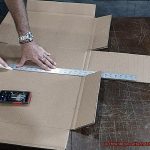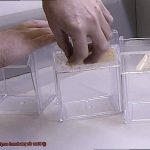Joining two pieces of plastic together is like solving a captivating puzzle. Repairing a broken plastic item or creating something new requires careful consideration and the right techniques. But fear not. With a little know-how and a few simple steps, you can achieve a bond that’s strong and durable.
In this blog post, we’ll explore the various methods and techniques used to successfully bond plastic to plastic. So whether you’re an avid DIY enthusiast or a seasoned professional looking to expand your repertoire, get ready to uncover the secrets of mastering this essential skill. Prepare to dive into the captivating world of plastic bonding.
Solvent Welding: An Overview
Contents
- 1 Solvent Welding: An Overview
- 2 Advantages of Solvent Welding
- 3 Epoxy Adhesives: An Overview
- 4 Benefits of Epoxy Adhesives
- 5 Cyanoacrylate Adhesives
- 6 Benefits of Cyanoacrylate Adhesives
- 7 Heat Bonding: An Overview
- 8 Benefits of Heat Bonding
- 9 Mechanical Fasteners: An Overview
- 10 Benefits of Mechanical Fasteners
- 11 Conclusion
To start, let’s unravel the process of solvent welding. It begins with meticulous surface preparation, ensuring that every speck of dirt and contaminants is banished. Then, a brush or applicator artfully applies a solvent like acetone or MEK to both surfaces. This magical elixir penetrates the plastic molecules, softening them and allowing for a firm press that fuses the surfaces together. With patience and time, the bond fully cures, creating a connection as strong as the original plastic material itself.
Solvent welding boasts several advantages that set it apart from other bonding methods. Firstly, it delivers a visual feast for the eyes by eliminating any visible joints or seams. This makes it a favorite in art projects and architectural models where aesthetics reign supreme. Moreover, its strength and durability make it an ideal choice for plumbing, automotive, and construction applications.
However, not all plastics are compatible with solvent welding. Some plastics possess chemical compositions that scoff at certain solvents, leading to weak or failed bonds. Thus, it is crucial to carefully select solvents that dance harmoniously with the plastics being bonded.
Advantages of Solvent Welding
In this exploration, we will delve into the mesmerizing advantages of solvent welding – the glue that brings plastic dreams to life.
Advantage 1: Unbreakable Strength and Durability
Imagine having a bond that rivals the strength of the original plastic material itself. With solvent welding, this becomes a reality. By softening and melting the plastic surfaces, solvent welding allows the molecules to intermingle and create an unbreakable connection. Say goodbye to weak or brittle bonds – with solvent welding, your creations will withstand the test of time.
Advantage 2: Flawlessly Seamless Joints
Gone are the days of unsightly seams or gaps marring your plastic masterpieces. Solvent welding creates seamless joints that not only enhance aesthetic appeal but also bolster structural integrity. It’s like witnessing magic – the plastics fuse together seamlessly, leaving behind a flawless and continuous connection.
Advantage 3: Versatility at its Finest
PVC? ABS? Acrylic? Polycarbonate? No matter what type of plastic you’re working with, solvent welding is your go-to technique. This method is highly versatile and compatible with various types of plastics. So go ahead and explore your creativity without limitations – solvent welding is here to turn your visions into tangible realities.
Advantage 4: Saving Bucks.
Who doesn’t appreciate cost-effective solutions? Solvent welding not only offers a reliable bonding method but also keeps your wallet happy. The solvents used in this process are relatively inexpensive compared to other techniques such as ultrasonic welding or adhesive bonding. Plus, you won’t require any additional hardware or fasteners, further reducing costs. It’s a win-win.
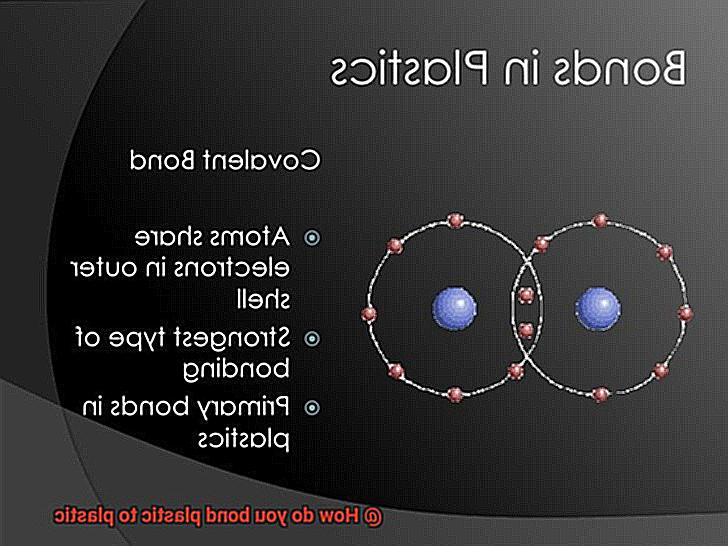
Advantage 5: Fast and Furious
Got tight deadlines or a production line to meet? Solvent welding is your secret weapon. It’s a quick and efficient bonding method. Once the solvent is applied, it takes only a few minutes for your joint to fully cure. So get ready to impress your clients or complete your projects in record time.
Advantage 6: Chemical Resistance
Solvent-welded joints are superheroes when it comes to resisting chemicals and solvents. Thanks to the fusion created during solvent welding, your plastic assemblies can handle harsh substances without breaking a sweat. From plumbing systems to chemical storage containers and automotive components, solvent-welded connections have got you covered.
Epoxy Adhesives: An Overview
We will delve into the extraordinary qualities of epoxy adhesives and their unrivaled ability to bond plastic to plastic. Whether you’re a DIY enthusiast or a seasoned professional seeking a reliable bonding solution, epoxy adhesives are here to save the day.
The Power of Epoxy Adhesives:
Prepare to be amazed by the exceptional bonding properties of epoxy adhesives, making them the go-to choice for countless applications. Consisting of two components – the epoxy resin and the hardener – these adhesives unleash an unstoppable chemical reaction when combined. The result? A bond that is not only strong and durable but capable of withstanding even the most arduous challenges.
Versatility at its Finest:
One of the greatest advantages of epoxy adhesives is their versatility in bonding different types of plastics. Whether it’s thermosetting or thermoplastic materials, epoxy adhesives have got you covered. From automotive parts to intricate electronic components, these adhesives rise to any task with unmatched adaptability.
The Perfect Match: Preparing for Success:
Before embarking on your bonding journey, proper preparation is vital for a successful bond between plastic surfaces. Thoroughly cleaning the surfaces and eradicating any contaminants is essential. To take it up a notch, employing sandpaper or solvents can further enhance adhesion. Remember, achieving the perfect match is the key to unlocking success.
The Art of Application:
With your surfaces primed and ready, it’s time to apply the epoxy adhesive with finesse. Follow the manufacturer’s instructions regarding the mixing ratio and application method. Whether you opt for a brush, syringe, or any other applicator, ensure both surfaces receive an even and precise coating of the adhesive, setting the stage for an impeccable bond.
Pressing Together for Super Strength:
To activate their superpowers, epoxy adhesives require firm pressure between the plastic surfaces. This ensures optimal contact and eliminates any pesky air bubbles that may compromise the bond. Depending on the size and shape of the objects being bonded, clamps or other ingenious holding methods may be necessary. Remember, teamwork makes the dream work.
Curing Time: Patience is a Virtue:
Once your plastic pieces are securely bonded, it’s time to let the epoxy adhesive work its transformative magic. Curing times can range from a few hours to several days, depending on the specific product. Embrace patience and allow your bond to reach its full strength before unveiling your masterpiece to the world.
Benefits of Epoxy Adhesives
Epoxy adhesives are here to save the day. With their incredible bonding capabilities and a host of benefits, you’ll wonder why you ever considered any other glue.
First and foremost, epoxy adhesives are known for their strength. They create a bond that is not easily broken, ensuring your plastic parts stay firmly together. Whether for small craft projects or larger industrial applications, epoxy adhesives provide the strength you need.
But it doesn’t stop there – durability is another standout feature. Once cured, they form a long-lasting bond that can withstand the test of time. No need to worry about your plastic parts coming apart after a short period – epoxy has got you covered.
Flexibility is also a key advantage. Epoxy adhesives have the ability to fill gaps and bond uneven surfaces, ensuring a strong and secure connection between your plastic parts. Unlike other adhesives that struggle with uneven surfaces, epoxy can bridge those gaps and provide a reliable bond.
When it comes to cost-effectiveness, epoxy adhesives are hard to beat. Their versatility allows them to bond different types of plastics together, including ABS, PVC, and polycarbonate. This means you won’t need multiple types of adhesive for different projects – one epoxy adhesive can do it all.
Now let’s talk applications. Epoxy adhesives have been successfully used in a wide range of projects. From automotive parts to electronics and medical devices, epoxy has proven its worth time and time again. Imagine the satisfaction of knowing your project is securely bonded thanks to the power of epoxy.
Cyanoacrylate Adhesives
Cyanoacrylate adhesives, commonly known as super glue or instant glue, have revolutionized the world of plastic bonding. These adhesives have gained immense popularity due to their lightning-fast setting time and exceptional bonding strength. Let’s delve into the advantages and limitations of using cyanoacrylate adhesives for plastic bonding.
Advantages:
- Swift and potent bonding: Cyanoacrylate adhesives spring into action upon contact with the moisture in the air, resulting in rapid polymerization and the formation of robust bonds. This makes them the go-to choice for bonding plastic materials that are traditionally arduous to join.
- Versatility at its finest: Cyanoacrylate adhesives come in various viscosities and formulations, making them suitable for a wide range of applications. They exhibit excellent bond strength on rigid plastics like polystyrene, acrylics, and PVC.
Resilience against temperature fluctuations, moisture, and chemicals: These adhesives offer unwavering durability and can withstand the harshest conditions, making them suitable for diverse environments.
Adhesion prowess: Cyanoacrylate adhesives possess an affinity for a vast array of materials. Their versatility extends beyond plastic bonding, allowing for effective bonding on different surfaces.

Limitations:
- Surface preparation is paramount: Achieving optimal bond strength necessitates meticulous preparation of the surfaces to be bonded. Surfaces must be clean, dry, and free from contaminants such as oils or grease. Slightly roughening the surfaces with sandpaper can enhance the bond strength.
- Not a universal solution for all plastics: While cyanoacrylate adhesives excel at bonding rigid plastics, they may not be suitable for certain types of plastics with low surface energy or poor chemical resistance.
- Precision and control during application: The application process demands finesse. It is recommended to apply a thin layer of adhesive onto one surface using a brush or nozzle applicator. Given the rapid curing time of cyanoacrylate adhesives, aligning and pressing the surfaces together immediately after application is crucial.
- Limited flexibility: Cyanoacrylate adhesives can be somewhat brittle and may not withstand high impact or peel forces. They may not be suitable for bonding large surface areas or flexible plastics that require some degree of joint flexibility.
Benefits of Cyanoacrylate Adhesives
These incredible adhesives, also known as super glue, have revolutionized the way we bond plastic to plastic, offering a myriad of benefits that elevate them to superhero status. Join us as we embark on an exploration of the remarkable advantages that cyanoacrylate adhesives bring to the table when it comes to bonding plastic materials.
Lightning-Fast Curing Time:
In a flash, cyanoacrylate adhesives work their magic by curing within seconds. This lightning-fast setting time is a game-changer, especially in industries where time is of the essence. From manufacturing to assembly lines, these adhesives ensure quick and efficient bonding of plastic parts, saving invaluable time and boosting productivity.
Unyielding Bond Strength:
When it comes to bonding plastic to plastic, strength is paramount. Fear not. Cyanoacrylate adhesives create a bond that would make even the Hulk proud. Their robust and durable bond guarantees that your plastic parts stay securely attached, even when subjected to stress or movement. Say goodbye to loose connections and welcome a rock-solid bond.
Versatility at Its Finest:
Cyanoacrylate adhesives don’t discriminate when it comes to plastics – they bond with all types. Whether it’s polystyrene, PVC, acrylic, or ABS, these adhesives rise to any challenge. Their versatility makes them a go-to choice for various plastic bonding applications, catering to all your adhesive needs.
Resistance to Moisture and Chemicals:
In a world where water and chemicals can wreak havoc on adhesive bonds, cyanoacrylate adhesives shine bright. Once cured, they create a waterproof and chemical-resistant bond, ensuring your plastic parts stay intact, even in the face of moisture or harsh substances. Dive into any environment with confidence.
Heat and Cold Resistance:
Extreme temperatures have nothing on cyanoacrylate adhesives. These superheroes can withstand a wide range of temperatures without compromising their bond strength. So, whether you’re dealing with scorching heat or freezing cold, rest assured that your plastic bond will remain unwavering.
Easy Peasy Application:
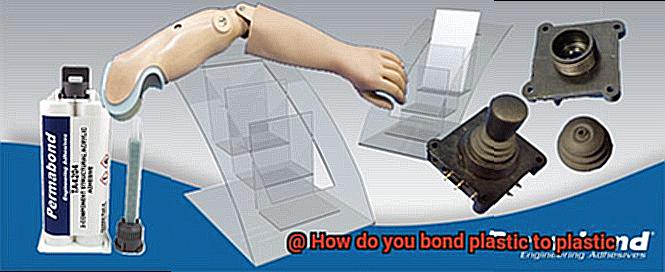
Bid farewell to complicated bonding processes. Cyanoacrylate adhesives come to the rescue with their user-friendly nature. They are conveniently packaged in squeeze bottles or tubes with applicators, making them a breeze to dispense and apply with precision. No special equipment or extensive surface preparation required – just apply and bond.
Heat Bonding: An Overview
Heat bonding is a popular and effective technique for joining plastic materials. It involves melting the surfaces of two plastic objects using heat and pressing them together until they cool and solidify, creating a strong and durable bond. There are several different heat bonding techniques, each with its own advantages and disadvantages.
- Hot plate welding: This method involves placing the plastic pieces on a heated metal plate until they reach their melting point. Once melted, the pieces are pressed together and allowed to cool, forming a solid bond. Hot plate welding is ideal for larger plastic parts or those with complex shapes.
- Ultrasonic welding: High-frequency vibrations generate heat and melt the surfaces of the plastics in this technique. The two pieces are held under pressure while ultrasonic vibrations are applied, creating a strong bond. Ultrasonic welding works well for smaller plastic parts or those with intricate designs.
- Vibration welding: Similar to ultrasonic welding, vibration welding involves one plastic piece being held stationary while the other vibrates against it at a high frequency. The friction between the surfaces generates enough heat to melt the plastics and create a bond. Vibration welding is commonly used for large parts or thicker plastic materials.
- Heat staking: A heated metal tool is inserted into one of the plastic pieces, melting a specific area in this process. The tool is then removed, and the second plastic piece is pressed into the melted area until it cools and solidifies, creating a secure bond.
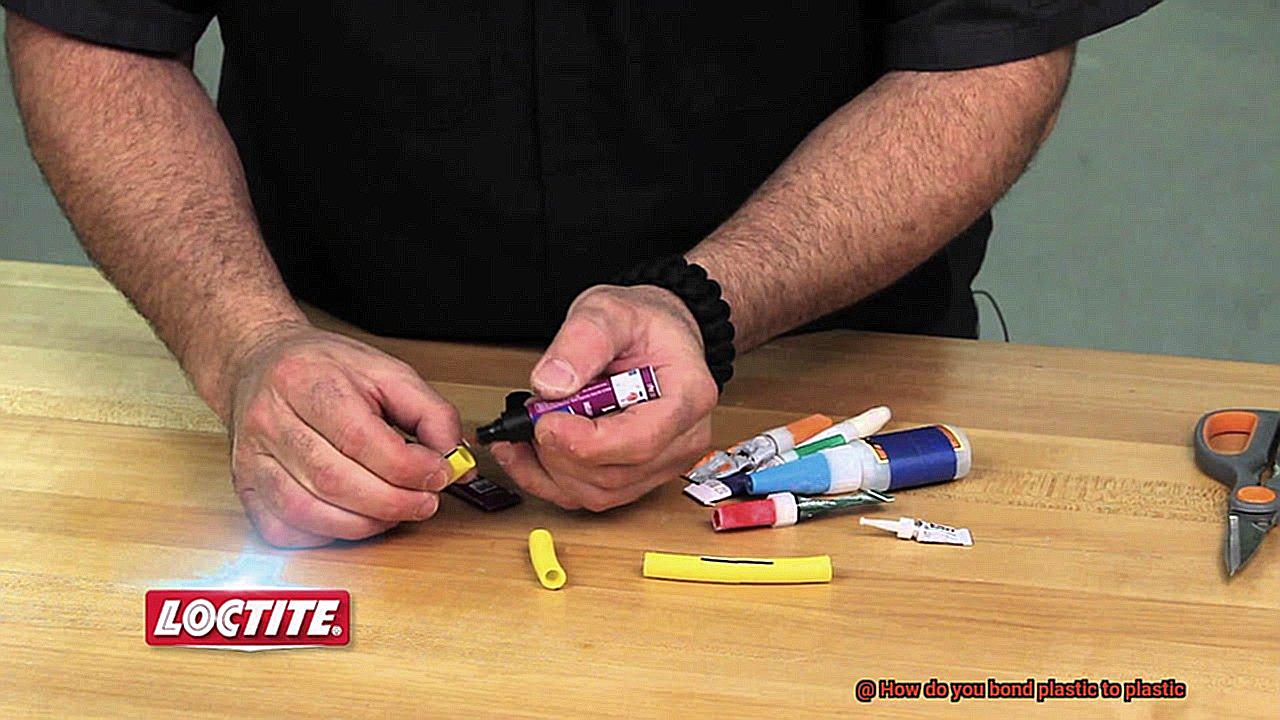
Heat bonding offers several advantages, including cost-effectiveness as it eliminates the need for additional adhesives or fasteners. It also creates strong bonds that are resistant to physical stress, moisture, and temperature changes. However, not all types of plastics can be effectively heat bonded due to high melting points or non-melting properties.
Benefits of Heat Bonding
Heat bonding is a sizzling technique that offers a plethora of benefits when it comes to bonding plastic to plastic. Let’s explore the fiery advantages of this method and discover why it’s the go-to choice for many industries.
First and foremost, heat bonding creates a bond that is stronger than a rock concert mosh pit. By melting the plastic surfaces and fusing them together, heat bonding forms a seamless connection that can withstand any challenge. It’s like witnessing a love story between plastics, resulting in a bond that often surpasses the strength of the original material itself.
But that’s just the beginning. Heat bonding is as versatile as a chameleon at a costume party. It has the ability to join different types of plastics, including those hard-to-handle thermoplastics like polyethylene, polypropylene, and PVC. Talk about versatility.
Convenience is another key advantage of heat bonding. Unlike other bonding methods, it requires no additional materials. No messy adhesives or solvents here. This means no harmful fumes or curing time. Plus, it eliminates the risk of chemical reactions or contamination that may occur with other techniques. Heat bonding is like having a reliable partner who never lets you down.
Aesthetics also come into play with heat bonding. It creates a seamless finish that would make even the most demanding fashionista swoon. The melted plastics blend together flawlessly, leaving behind no visible seams or joints. This makes it perfect for applications where appearance matters, such as automotive interiors or consumer products.
But wait, there’s more. Heat bonding is resistant to moisture, chemicals, and temperature variations. Those melted plastics create a bond that can withstand water penetration and keep out pesky chemicals. And when it comes to extreme temperatures, heat-bonded joints are less likely to fail compared to adhesive bonds. It’s like having a partner who can handle any climate.

Speed and efficiency are also on the list of benefits. Heat bonding is as fast as a cheetah on roller skates. The process can be completed quickly, allowing for high production rates in manufacturing settings. Once the heat source is removed and the plastics cool down, the bond solidifies almost instantly. It’s like having a partner who always keeps up with your fast-paced lifestyle.
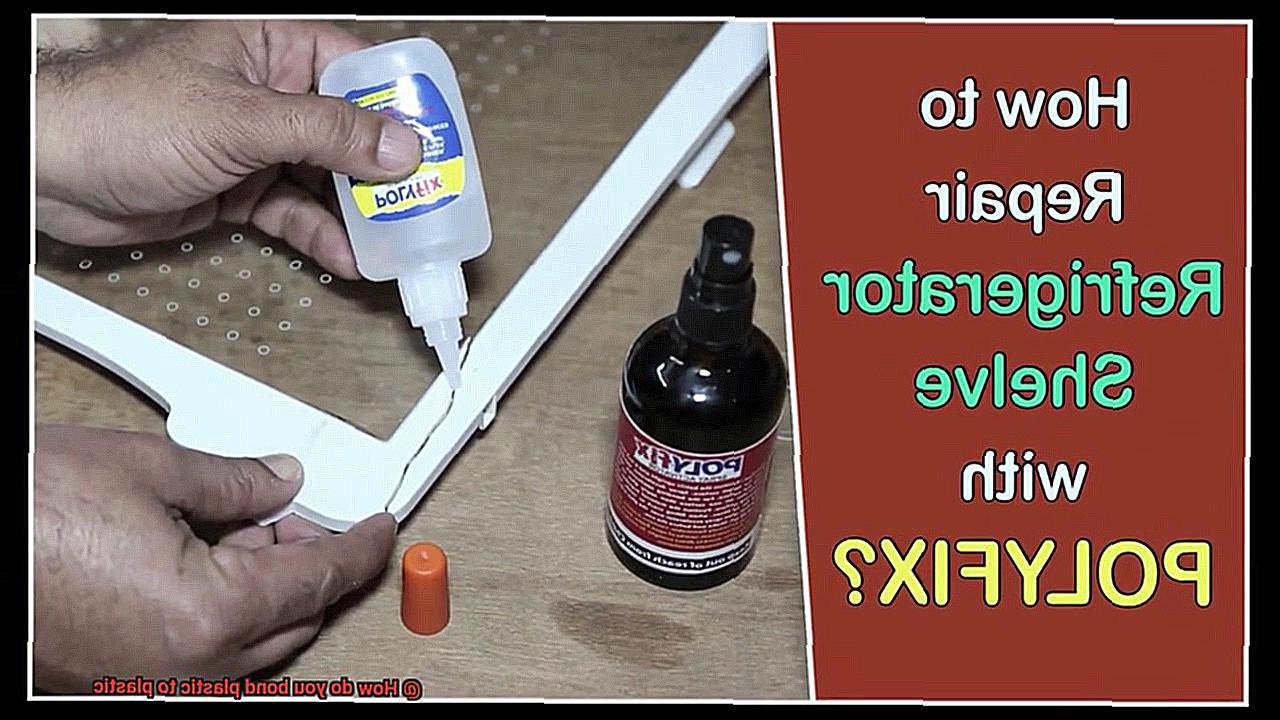
And, of course, we can’t forget about the cost. Heat bonding is as cost-effective as finding a twenty-dollar bill in your pocket. You don’t need any additional materials apart from the plastic components themselves, saving you money. Plus, the simplicity of the process means you don’t need specialized equipment or skilled labor. It’s like having a partner who knows how to save a penny or two.
Mechanical Fasteners: An Overview
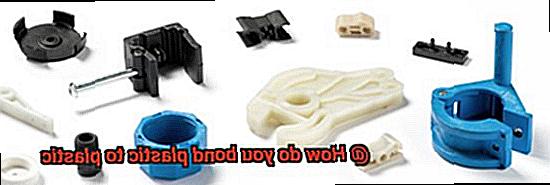
In this comprehensive overview, we will explore the advantages, limitations, and considerations when using mechanical fasteners. So fasten your seatbelts and get ready for a ride full of insights.
Advantages of Mechanical Fasteners:
- Strength and Durability: Mechanical fasteners create a bond that can withstand heavy loads and resist vibrations, making them ideal for applications requiring strength and stability.
- Versatility: With a wide range of options such as screws, bolts, nuts, and rivets, mechanical fasteners offer versatility in terms of ease of removal and replacement or providing permanent connections.
- Compatibility: Selecting the right combination of fastener material and plastic ensures a secure bond without compromising the integrity of the plastics.
- Design Considerations: Size, length, thread pattern, and diameter of fasteners should be carefully chosen based on the thickness and structure of the plastic pieces being bonded.
Limitations of Mechanical Fasteners:
- Accessibility: Some designs or structures may hinder access to both sides of the plastic pieces being bonded, which can pose challenges in utilizing mechanical fasteners.
- Sealing Limitations: While mechanical fasteners offer strength, they may not provide a completely watertight or airtight seal. Other bonding methods should be explored for projects requiring such characteristics.
- Specific Material Considerations: Certain plastics may be more vulnerable to cracking or weakening when subjected to specific types of fasteners. It is crucial to select a compatible fastener to avoid potential issues.
Considerations for Successful Bonding:
- Proper Installation Techniques: Accurate drilling of holes for screws or bolts, using appropriate tools for tightening, and following recommended torque specifications are essential for achieving a strong bond.
- Enhanced Bond Strength: In some cases, applying adhesive or using washers can distribute stress more evenly and reduce the risk of cracking or weakening.
Benefits of Mechanical Fasteners
When it comes to bonding plastic to plastic, mechanical fasteners often take a backseat to their adhesive counterparts. However, these unsung heroes offer a range of advantages that make them the preferred choice in various industries and applications. In this blog post, we will explore the key benefits of using mechanical fasteners and why they should not be overlooked.
Strength and Durability:
Mechanical fasteners provide a reliable and long-lasting connection between plastic components. Unlike adhesives that may weaken over time or be affected by environmental factors, mechanical fasteners, such as screws, bolts, or rivets, offer exceptional strength and durability. They can withstand heavy loads and resist vibrations, ensuring the integrity of your project.
Ease of Assembly and Disassembly:
Mechanical fasteners are easy to install and remove using basic tools. Unlike adhesives that require curing time or specialized equipment, mechanical fasteners offer quick and hassle-free assembly and disassembly. This makes them ideal for applications where frequent maintenance or repairs are required. With mechanical fasteners, you can swiftly disassemble your project, make necessary adjustments or repairs, and reassemble it without any hassle.
Flexibility in Adjustment and Alignment:
Mechanical fasteners allow for easy adjustment and alignment before tightening. Unlike adhesives that bind components permanently upon curing, mechanical fasteners enable components to be easily repositioned or realigned, ensuring precise fits and reducing the chances of misalignment. This is especially beneficial when working with intricate plastic designs that require precise positioning.
Versatility in Load Distribution:
Mechanical fasteners offer versatility in load distribution across the bond area. By strategically designing and placing these fasteners, you can distribute the load evenly, reducing stress concentrations and improving overall strength. This is particularly advantageous for applications where plastic components experience significant forces or vibrations. Mechanical fasteners ensure that the load is distributed evenly, preventing any weak points in the bond.
Aesthetic Appeal:
In addition to their functional benefits, mechanical fasteners provide aesthetic appeal. Unlike adhesives that may leave visible residue or require additional finishing processes, mechanical fasteners offer a clean and uniform appearance. This makes them particularly suitable for applications where aesthetics are important, such as consumer products or architectural designs. With mechanical fasteners, you can have both functionality and visual appeal.
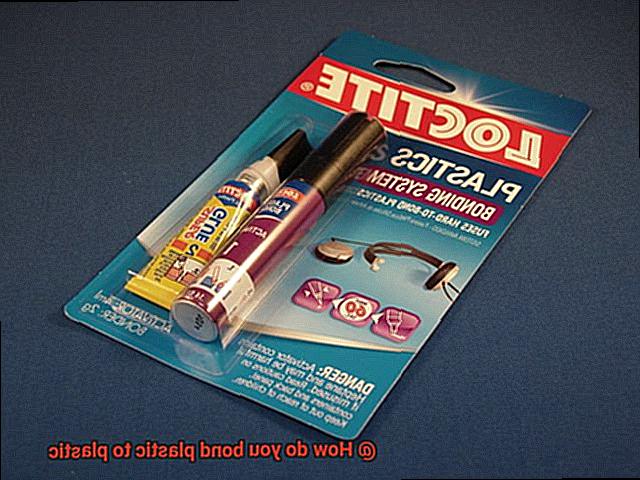
Recyclability and Reusability:
Mechanical fasteners contribute to a more sustainable approach by facilitating the recycling and reusability of plastic materials. Unlike adhesives that may complicate the recycling process or render components non-recyclable, mechanical fasteners can be easily removed during the recycling process. This not only reduces waste but also allows for the reuse of plastic components in future applications.
K9fXYmMffqs” >
Conclusion
Bonding plastic to plastic can be a tricky task, but with the right techniques and materials, it is definitely achievable.
One method is using adhesives specifically designed for bonding plastics together. These adhesives work by creating a strong chemical bond between the surfaces of the plastic, ensuring a durable and long-lasting connection.
Another option is thermal bonding, which involves melting the surfaces of the plastics and pressing them together to create a solid bond as they cool down. Additionally, mechanical fasteners such as screws or rivets can also be used to join plastic pieces together.
It’s important to choose the right method based on the specific type of plastic being bonded and the intended application.



